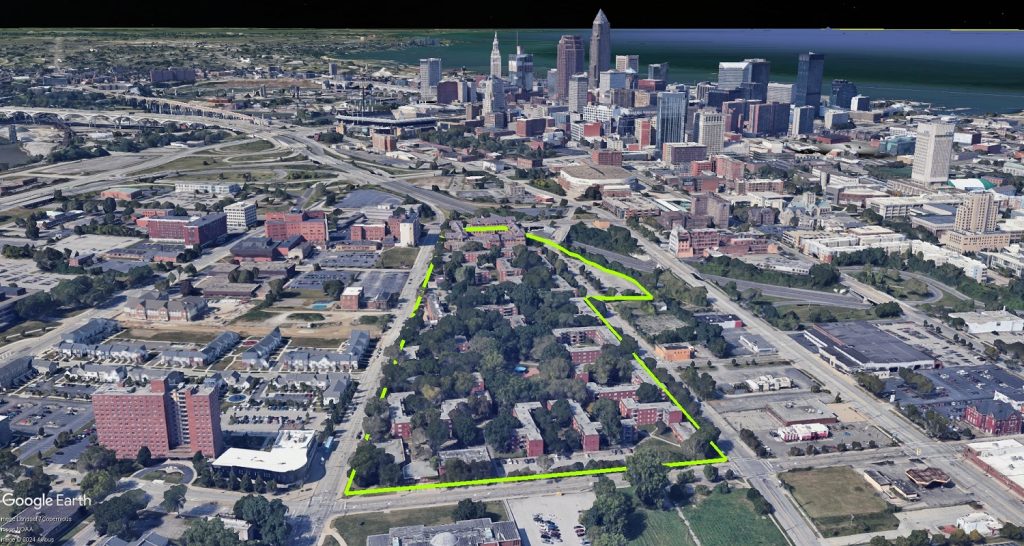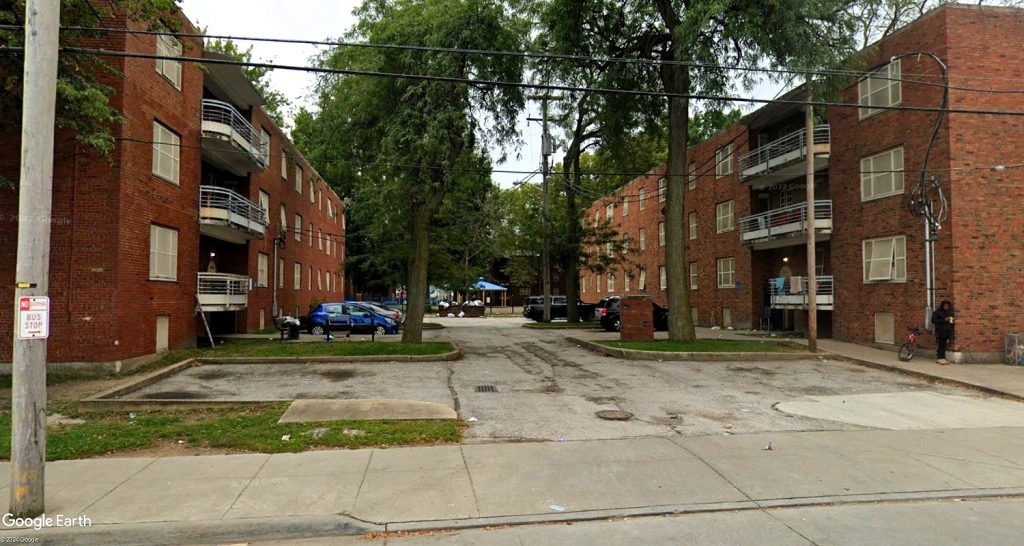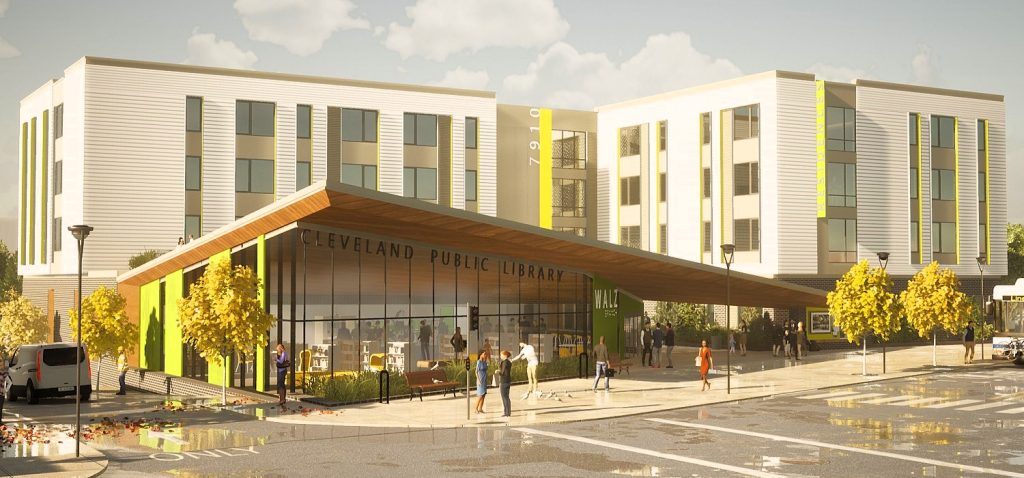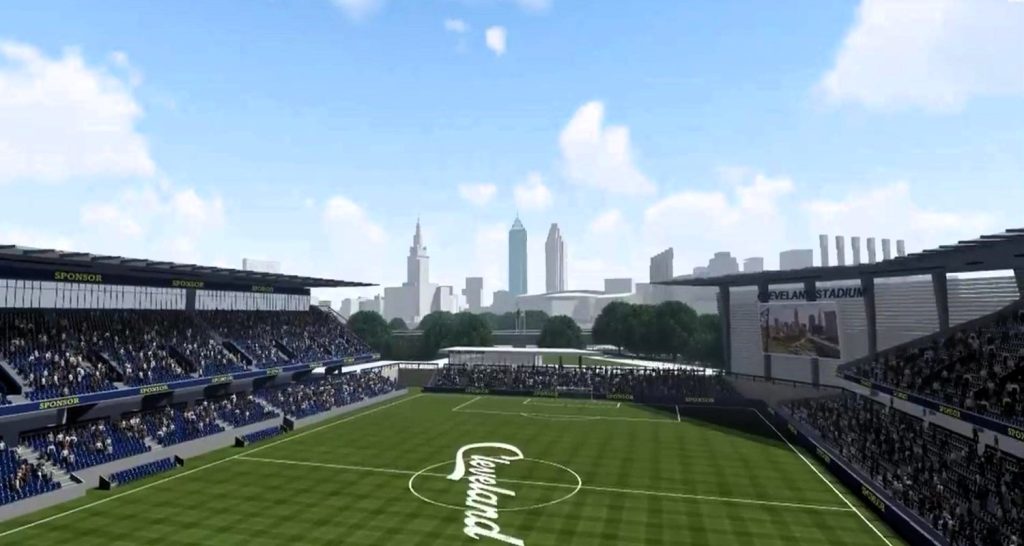Olde Cedar, juvenile justice center sites to host new housing

With nearly 900 mixed-income apartments envisioned, a plan to develop the largest single housing development in Downtown Cleveland’s history is reportedly in the works. While it will take multiple phases and many years to build, the partners and the plans for the massive project are coming together.
The lead partner is the Cuyahoga Metropolitan Housing Authority (CMHA) and the site is CMHA’s Olde Cedar housing projects, 2202 E. 30th St., plus the former Cuyahoga County Juvenile Courthouse and Detention Center, 2163 Cedar Ave. Combined, the two sites in downtown’s Campus District measure approximately 23 acres which is a vast canvas for an urban setting.
The only CMHA property that’s larger is the 27-acre Woodhill Homes, 2491 Baldwin Rd. But it has 487 units — fewer apartments than Olde Cedar’s 550 units and is several years newer than the 1937-built Olde Cedar — CMHA’s oldest active residential property and one of the oldest public housing projects in the United States.
Olde Cedar was built when the 2.4-square-mile Central Neighborhood southeast of downtown had 100,000 residents and some of the most blighted housing conditions in the city. Today, Central has about 12,000 residents — an increase of several thousand people above its lowest point at the turn of the last century.
Two sources who spoke to NEOtrans on the condition of anonymity said as planning and development for the Woodhill Homes redevelopment is winding down, the planning work on Olde Cedar is starting up. That work is guided by global architecture firm Gensler of Detroit whose local credits include the renovated RocketMortgage FieldHouse.
The sources also noted that affordable housing developer Pennrose of Philadelphia and general contractor John G. Johnson Construction Co. of Cleveland have been engaged by CMHA in the project. However, considering how early it is in the planning, CMHA may be merely seeking their guidance in developing project programming and pricing estimates.
Pennrose developed CMHA’s Sankofa Village and the new Cedar Estates while J.G. Johnson built the Cedar Estates and other affordable apartment complexes in Cleveland and elsewhere. NEOtrans reached out to CMHA, Pennrose and Campus District officials for comment but none responded prior to publication of this article.
Proposed are 880 housing units, the sources said. Olde Cedar was previously the largest single housing development in or next to downtown. Coming close was the pair of 25-story high-rises of Reserve Square built in 1969 and 1973 as the Park Centre, totaling nearly 500 apartments. Reserve Square fills an entire block between East 12th and 13th streets, plus Chester and Superior avenues.
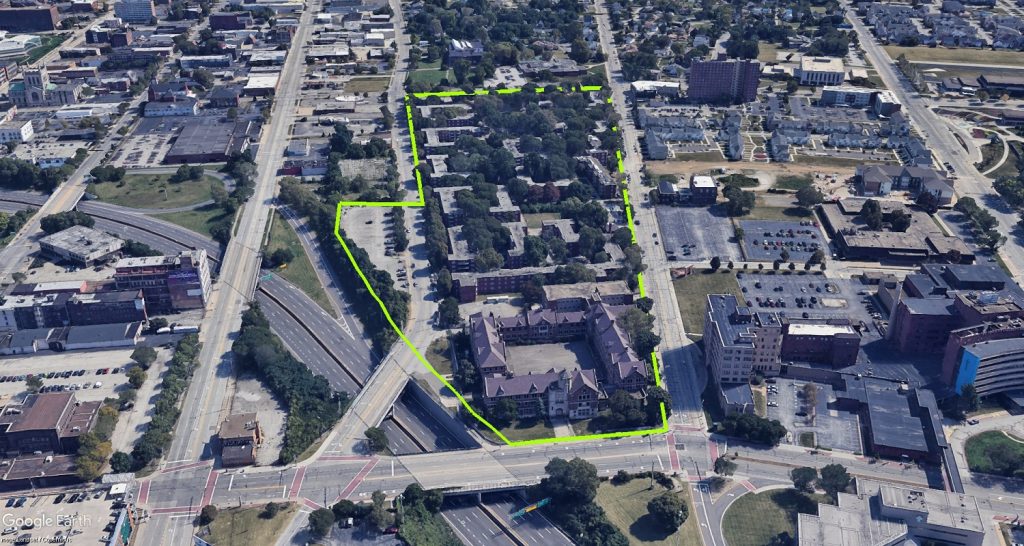
Looking from the west at the 23-acre housing redevelopment site, the former Cuyahoga County Juvenile Courthouse and Detention Center is visible in the foreground next to Interstate 90. The juvenile center will be demolished and used first as a construction staging site for the highway’s reconstruction, then as the first phase of the housing development (Google).
CMHA’s redevelopment of Woodhill has been underway for several years now, starting with the construction of new mixed-income buildings nearby along transit lines. Some residents of the 1940-built Woodhill Homes are moving into the new apartments while the old ones are demolished and ultimately replaced with new buildings of their own.
A step-by-step process is how the sources said the redevelopment of Olde Cedar will likely progress, too — starting with the former juvenile center site. Cuyahoga County officials are seeking a grant from the Ohio Brownfield Remediation Program to pay for much of the projected $2 million cost of remediating and demolishing the 1931-built juvenile courthouse and detention center.
Once razed, its 4.5-acre property will be the construction staging area for the Ohio Department of Transportation’s (ODOT) two-year, $250 million project to redesign and rebuild Interstate 90 in the Central Interchange area between East 9th Street and Carnegie Avenue. This project will involves replacing the East 22nd Street and Carnegie Avenue bridges over I-90.
This phase of ODOT’s Inner Belt improvement project also includes removing Cedar’s bridge over I-90, replacing it with a new roadway along and south of the highway, and widening the East 22nd bridge over the interstate to cap the divisive highway with a public space.
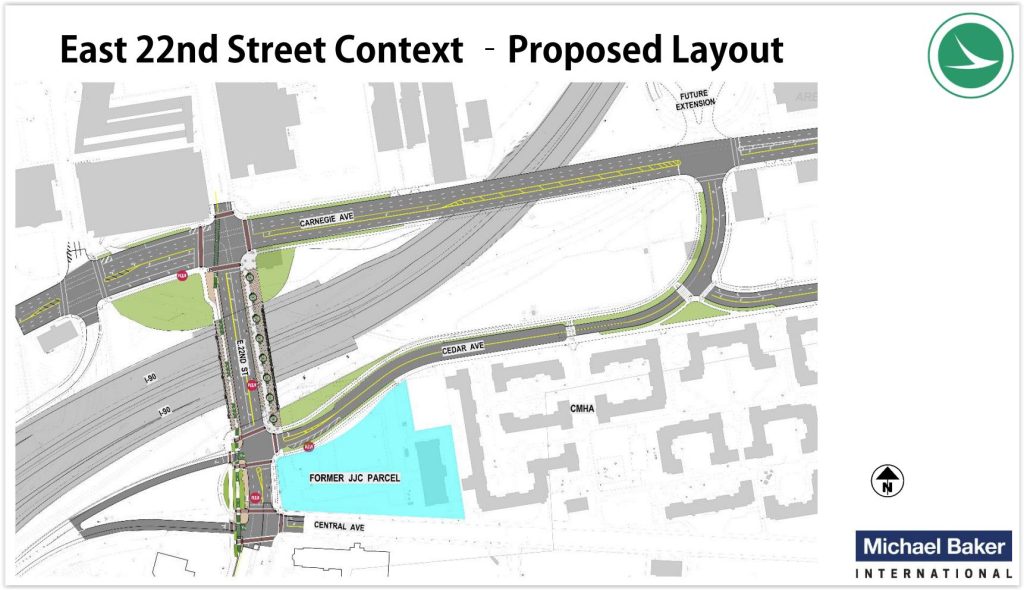
Detailed designs for the Inner Belt (Interstate 90) improvement project is based on this concept of removing Cedar Avenue’s bridge over the highway, rerouting it through a part of the Juvenile Courthouse and Detention Center site, and widening the East 22nd Street overpass of I-90 with public spaces along it (ODOT/MBI).
Once the highway project is done, the former juvenile courthouse and detention center site will become available for development — sometime after 2026, if ODOT’s current timeline holds. That will give CMHA and its partners time to secure financing for the first phase of replacing Olde Cedar. In the meantime, CMHA continues to maintain Old Cedar, including replacing roofs, steps and fixing parking lots.
What’s interesting is that CMHA’s apparent goal to build 880 apartments on the 23-acre canvas cannot be done if the current density of Olde Cedar is applied to the added juvenile center site. The current density, with only 140 off-street parking spaces mixed in, is 30 housing units per acre. It includes the Sterling Branch of the Cleveland Public Library. As a Carnegie library, it is unlikely to be demolished.
The proposed housing density is 38 units per acre over the entire site which could include additional off-street parking for the inclusion of an unknown number of mixed-income apartments. So, some buildings taller than Olde Cedar’s three- and four-story apartment blocks are likely to be part of the plan.
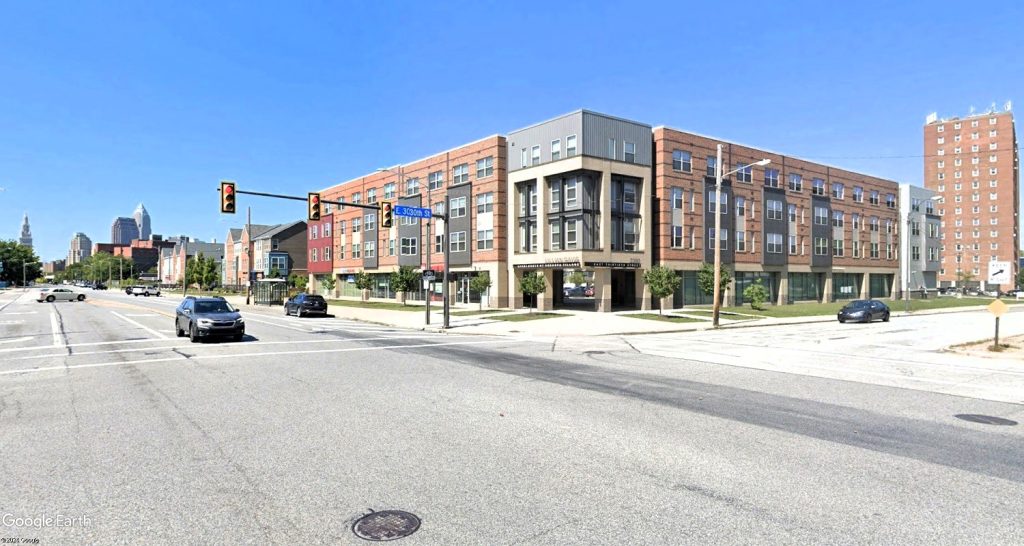
Other public housing structures near Olde Cedar were redeveloped by CMHA and Pennrose including these multifamily and single-family homes that make up Sankofa Village. This is a mixed-use portion of Sankofa Village at Community College Avenue and East 30th Street that could be a model for much of the Olde Cedar redevelopment (Google).
The sources said it is likely that the taller buildings would be a part of the first phase on the old juvenile center site. That would give CMHA the ability to not only accommodate residents from the first Olde Cedar buildings to be demolished but to expand the housing offerings, as planned.
And since that end of the overall development site is closer to the central business district and Cleveland State University, it would make sense to build a mid-rise here, if not a high-rise, the sources said. CMHA would like to get funding for as much of their development vision as they can while former Cleveland Congresswoman Marcia Fudge is secretary of of the U.S. Department of Housing and Urban Development.
It is also too soon to know if mixed-use, such as ground-floor retail spaces, will be included in this redevelopment. But given CMHA’s and Pennrose’s experience with the Sankofa Village project at Community College Avenue and East 30th Street, it’s probable that some sort of mixed use may be in the plans.
END

